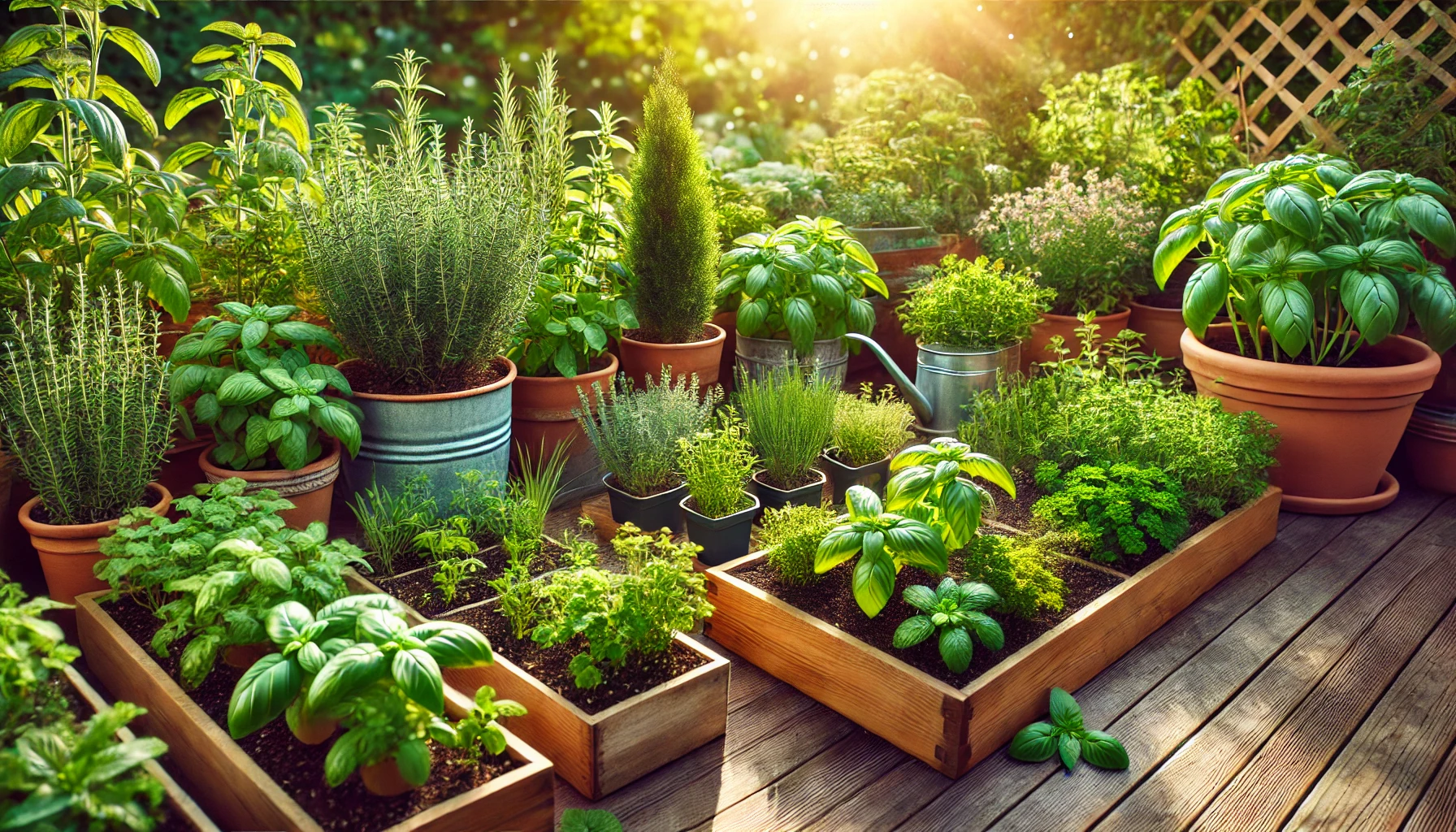Growing an herb garden is a rewarding way to have fresh, aromatic herbs right at your fingertips. Whether you want to enhance your cooking, make homemade teas, or simply enjoy the beauty of these fragrant plants, an herb garden is a wonderful addition to any space. This guide will show you how to successfully grow and care for your own herb garden.
Step 1: Choose the Right Location
Herbs thrive in a sunny location with well-draining soil. Most herbs need 6 to 8 hours of sunlight per day, so pick a spot in your garden or on your windowsill where they will get plenty of natural light.
- Outdoor or Indoor: Herbs can be grown both outdoors in a garden or indoors in pots or containers. If growing indoors, make sure to place them on a windowsill that gets ample sunlight.
- Well-Drained Soil: Herbs prefer soil that drains well. If you’re growing herbs outdoors, amend your garden soil with compost or organic matter to improve drainage.
Step 2: Select the Herbs to Grow
When selecting herbs, consider the types that best suit your cooking style, climate, and the space available.
- Popular Herbs for Beginners: Start with easy-to-grow herbs like basil, parsley, mint, thyme, rosemary, oregano, and chives. These herbs are versatile in the kitchen and grow well in various climates.
- Climate Considerations: Choose herbs that are suited to your local climate. For example, mint and basil thrive in warmer climates, while thyme and rosemary are more tolerant of colder conditions.
- Companion Planting: Some herbs grow well together and can help each other thrive. For instance, basil and tomatoes are excellent companions, while mint should be grown in a separate container to prevent it from overtaking other plants.
Step 3: Planting Your Herbs
After selecting your herbs, it’s time to plant them. Follow these tips to ensure a successful start:
- Spacing: When planting herbs, space them according to the instructions on the seed packet or plant label. Most herbs need a little space to spread out, but some, like mint, should be planted in containers to prevent them from spreading too much.
- Plant Depth: Ensure each herb is planted at the correct depth. For seedlings, dig a hole deep enough to cover the root ball but not too deep that the plant gets buried.
- Watering: After planting, water your herbs thoroughly to help settle the soil and promote root establishment.
Step 4: Caring for Your Herb Garden
Herbs are relatively low-maintenance but still require some care to thrive. Here are some essential tips for keeping your herb garden healthy:
- Watering: Herbs prefer consistently moist but not waterlogged soil. Water them when the top inch of soil feels dry. Avoid overhead watering to prevent fungal diseases and instead water the base of the plants.
- Fertilizing: Herbs don’t require heavy fertilization. Use a balanced, slow-release fertilizer once in the spring, or opt for organic alternatives like compost or worm castings to keep your plants healthy.
- Pruning: Regularly prune your herbs to encourage bushier growth and prevent them from flowering too early, which can reduce the flavor of the leaves.
- Harvesting: To keep your herbs growing strong, regularly harvest the leaves by cutting them back. Avoid removing more than one-third of the plant at a time to allow it to continue growing.
Step 5: Dealing with Pests and Diseases
While herbs are relatively resistant to pests, they can still attract unwanted insects and diseases.
- Check for Pests: Inspect your herb garden regularly for pests such as aphids, spider mites, and caterpillars. If you notice any, remove them manually or spray the plants with a mild solution of neem oil or insecticidal soap.
- Proper Spacing: Overcrowding can lead to poor airflow, which can encourage fungal diseases. Make sure your herbs are spaced properly to allow air circulation around each plant.
- Mulching: Apply a thin layer of mulch around the base of your herbs to retain moisture, suppress weeds, and improve soil health.
Step 6: Harvesting Your Herbs
Harvesting herbs is one of the most enjoyable aspects of growing them. Here’s how to do it properly:
- When to Harvest: The best time to harvest herbs is in the morning after the dew has dried but before the sun is too hot. This is when the oils in the herbs are most concentrated.
- How to Harvest: Use sharp scissors or pruning shears to snip off leaves or stems. For herbs like basil, pinch off the top leaves to encourage more growth.
- Drying and Storing: If you want to store your herbs for later use, dry them by hanging the stems upside down in a cool, dry place. Once dried, remove the leaves and store them in an airtight container.
Enjoy Fresh Herbs All Year Long
With a little care and attention, growing an herb garden can be a simple and rewarding experience. By selecting the right location, choosing the best herbs for your needs, and providing them with proper care, you can enjoy fresh, homegrown herbs all year long. Whether you’re cooking, crafting homemade teas, or simply enjoying their beauty, your herb garden will enhance your life in many ways.
